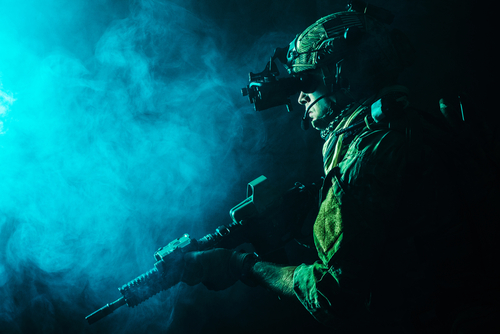
The Defense Advanced Research Projects Agency’s (DARPA) Defense Sciences Office (DSO) is exploring the development of next-generation night-vision goggle (NVG) technology.
The Enhanced Night Vision in eyeglass form (ENVision) program allows the DSO seeks to create lightweight NVGs offering a wide field of view (FOV) across multiple infrared (IR) spectrum bands without needing separate optics for each IR band.
The goal is to enable night vision through fog, dust, and other obscurants as well as provide thermal vision – all through a single flat lens.
“Our warfighters experience significant neck strain from current NVGs caused by the weight of the optics extending 4-5 inches in front of their helmets,” Rohith Chandrasekar, program manager in DARPA’s Defense Sciences Office, said. “If you’ve never worn NVGs for hours at a time, imagine wearing a baseball cap all day with a two-pound weight attached to the front of the bill. That gives you a small sense of the stress experienced. Extended use of such systems leads to a condition where the neck no longer has energy to keep the head upright, requiring warfighters to use their hands to lift and point their heads.”
Chandrasekar noted NVG wearers also have to swivel their heads frequently for peripheral vision since current optics only provide a 40-degree FOV compared to the 120-degree wide view with our eyes, making use of NVG systems more painful.
“DARPA investments over the past decade have led to breakthroughs in the areas of planar optics, detection materials, and novel light-matter interactions,” Chandrasekar said. “ENVision will leverage these advancements, amongst others, to develop enhanced night-vision devices in lightweight eyeglass form factors.”




